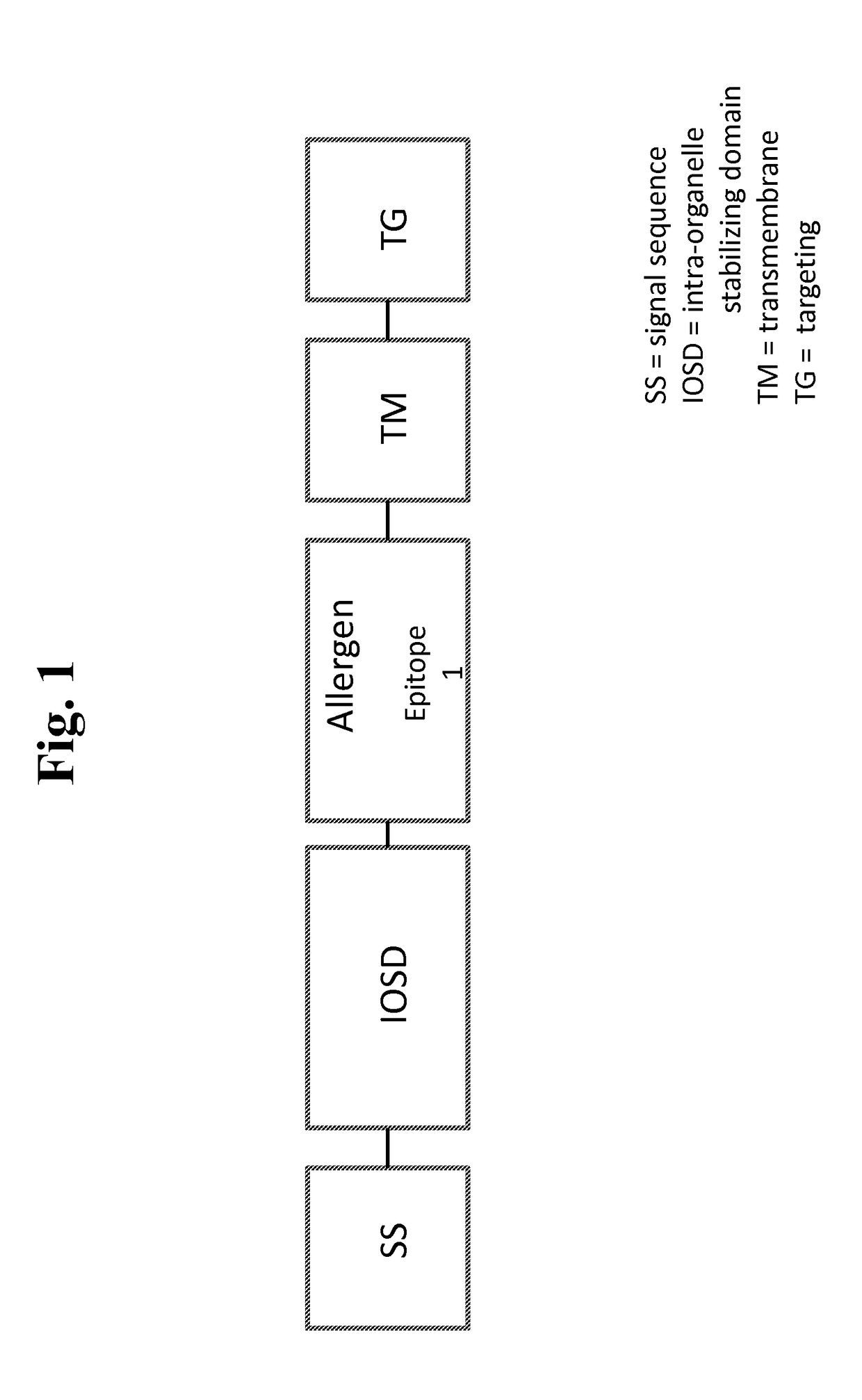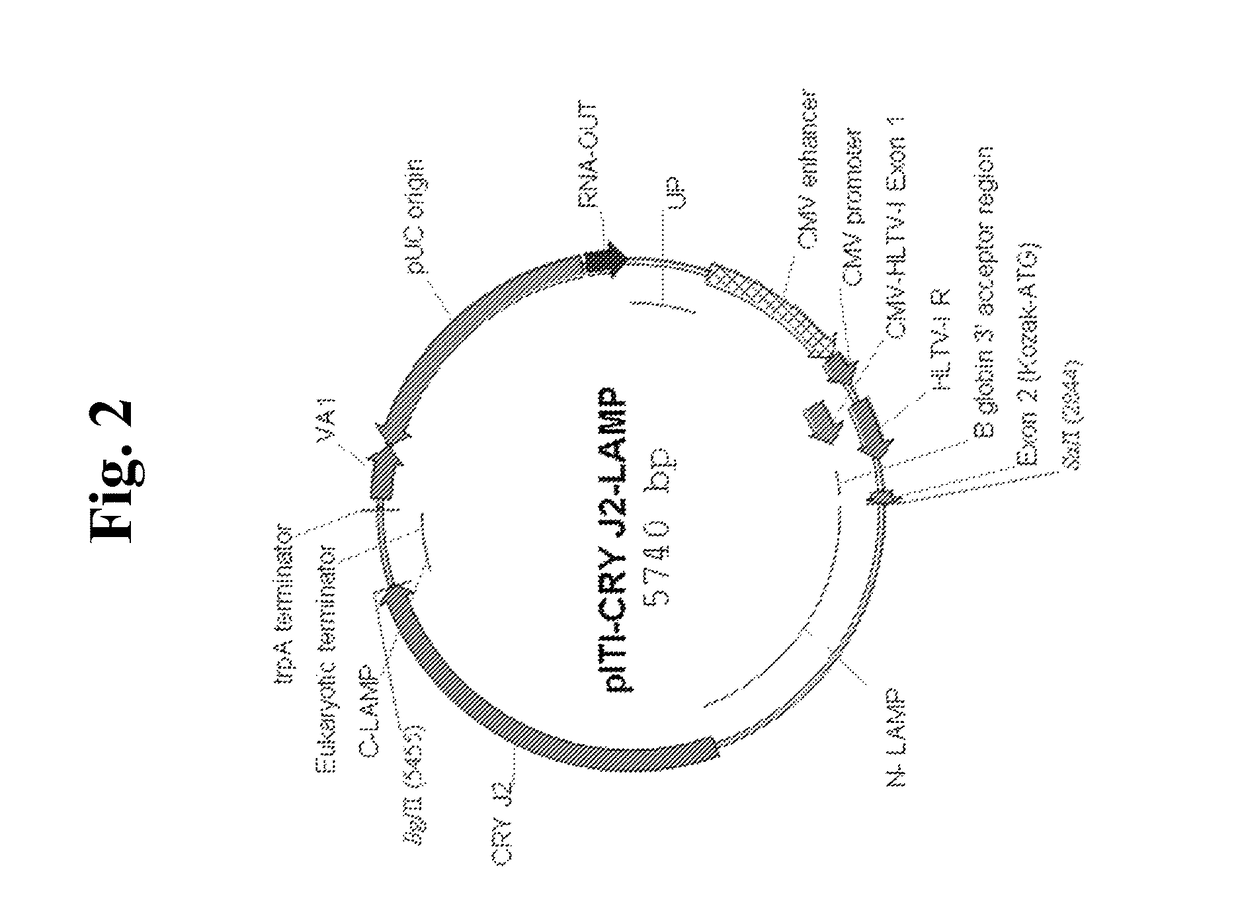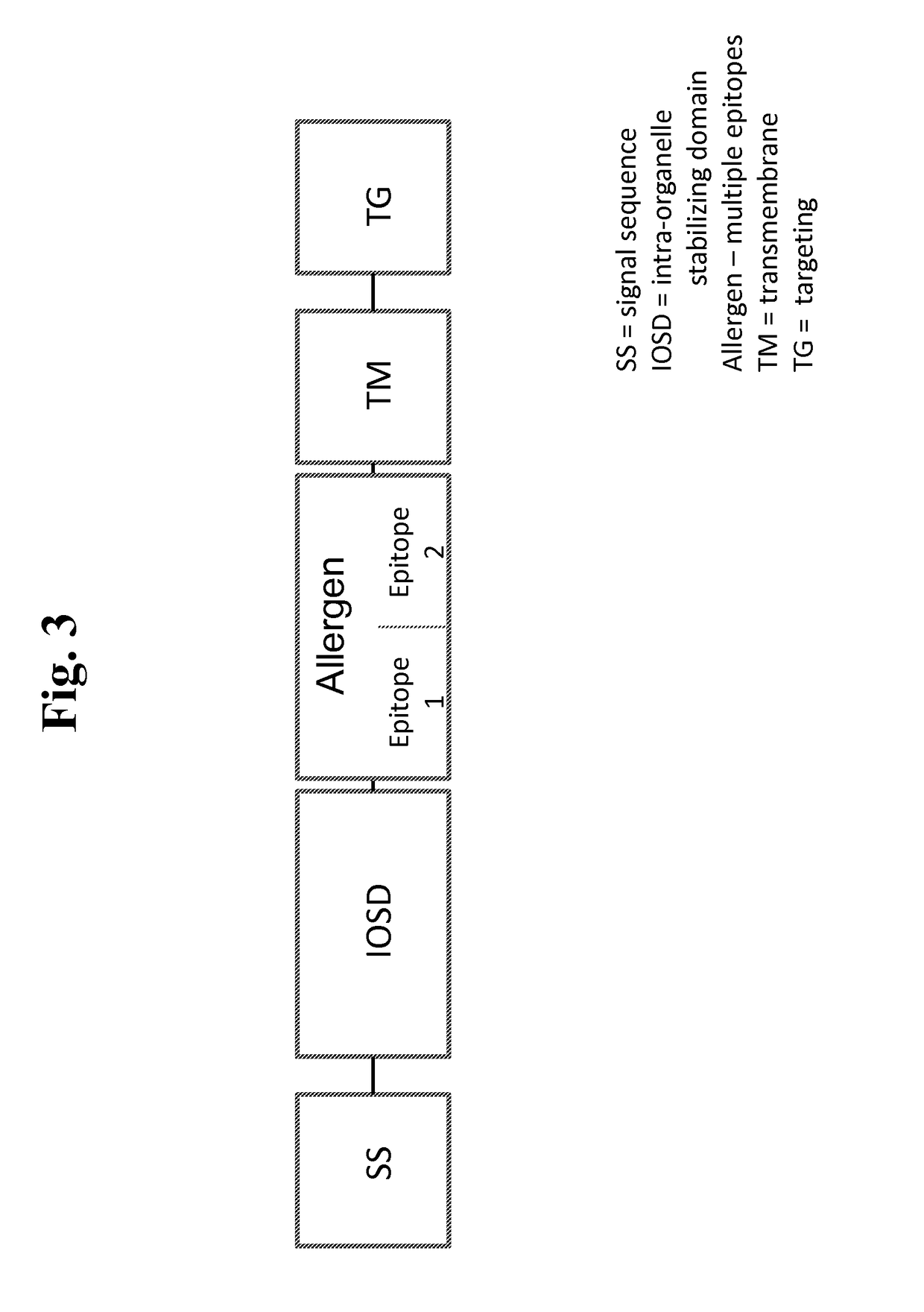Nucleic acids for treatment of allergies
a technology of nucleic acids and allergies, applied in the field of molecular biology and medicine, can solve the problems of not being able to enable the method of allergy treatment, not being able to teach the intracellular targeting of the entire protein coding sequence of an allergen, and not being able to theoretically connect the direction of anti-cd32 containing vaccines
- Summary
- Abstract
- Description
- Claims
- Application Information
AI Technical Summary
Problems solved by technology
Method used
Image
Examples
example 1
aterials and Methods
[0124]Immunizations and Sera Collection
[0125]Six to eight week old female BALB / c mice were purchased from Harlan Laboratories, Frederick, Md. and maintained at our animal facility in Rockville, Md. The DNA immunizations were given either intramuscularly or intradermal with 50 ug of plasmid DNA in a volume of 100 ul of sterile PBS. Sera were obtained by orbital bleed and stored at −20° C. for later analysis. For sensitization, mice were injected with either 5 ug / ml of recombinant CRYJ2 (rCRYJ2) or recombinant CRYJ1 (rCYRJ1) together with 100 ul of alum (2 mg / ml) in a total volume of 200 ul. Mice were bled weekly and sera were analyzed for CRYJ specific antibodies by ELISA.
[0126]Guinea Pigs
[0127]Female Guinea pigs were purchased and housed at Spring Valley Laboratories (Woodline, Md.). The DNA immunizations were given intramuscularly with 100 ug of plasmid DNA in a volume of 200 ul of sterile saline. Sera were obtained by cardiac bleed and store at 20° C. for later...
example 2
n of Allergens from Constructs
[0134]To show that the nucleic acid constructs of the invention can be used to express one or multiple allergens in transformed cells, human 293 cells were transfected with the CryJ2-LAMP plasmid, CryJ1+J2-LAMP plasmid (FIG. 4), CryJ1-LAMP plasmid, CryJ1 plasmid (lacking the CryJ1 signal sequence; FIG. 7), and the base plasmid vector alone (negative control; SEQ ID NO: 1). The results of the experiments are shown in FIG. 9.
[0135]FIG. 9A shows the results of the transfection reactions, with detection using an anti-Cry J2 antibody. Briefly, thirty micrograms of cell lysate was electrophoresed, then transferred to a membrane for immunoblotting. Proteins were detected by immunoblotting with a CryJ2 monoclonal antibody, followed by chemiluminescence. As can be seen from the Figure, constructs comprising the CryJ2 allergen alone, and the CryJ1+CryJ2 allergens were detected (lanes 2 and 3), whereas other allergens were not. In this experiment, the naturally-oc...
example 3
orting MHC II Processing Pathway for Constructs
[0137]To determine if chimeric proteins produced from the constructs of the invention are processed through the MHC II pathway, a set of experiments was performed to compare the immune response to the CryJ2 protein when administered as a coding region on a plasmid or as an allergen domain on a construct according to the present invention. The results are presented in FIGS. 10A and 10B.
[0138]More specifically, the figure shows the CryJ2 specific response following four DNA immunizations and crude pollen extract sensitization. Groups of mice (n=5) were immunized subcutaneously with either CRYJ2-LAMP plasmid DNA or CRYJ2 plasmid (see FIG. 8) DNA on days 0, 7, 14, and 21. Six weeks (day 77) following the last DNA immunization, the mice were sensitized with crude pollen extract in alum and given a booster three weeks (day 91) later. The data show the values generated from the pooled sera for each time point. IgG1 (FIG. 10A) and IgG2a (FIG. 1...
PUM
| Property | Measurement | Unit |
|---|---|---|
| volume | aaaaa | aaaaa |
| total volume | aaaaa | aaaaa |
| total volume | aaaaa | aaaaa |
Abstract
Description
Claims
Application Information
 Login to View More
Login to View More - R&D
- Intellectual Property
- Life Sciences
- Materials
- Tech Scout
- Unparalleled Data Quality
- Higher Quality Content
- 60% Fewer Hallucinations
Browse by: Latest US Patents, China's latest patents, Technical Efficacy Thesaurus, Application Domain, Technology Topic, Popular Technical Reports.
© 2025 PatSnap. All rights reserved.Legal|Privacy policy|Modern Slavery Act Transparency Statement|Sitemap|About US| Contact US: help@patsnap.com



